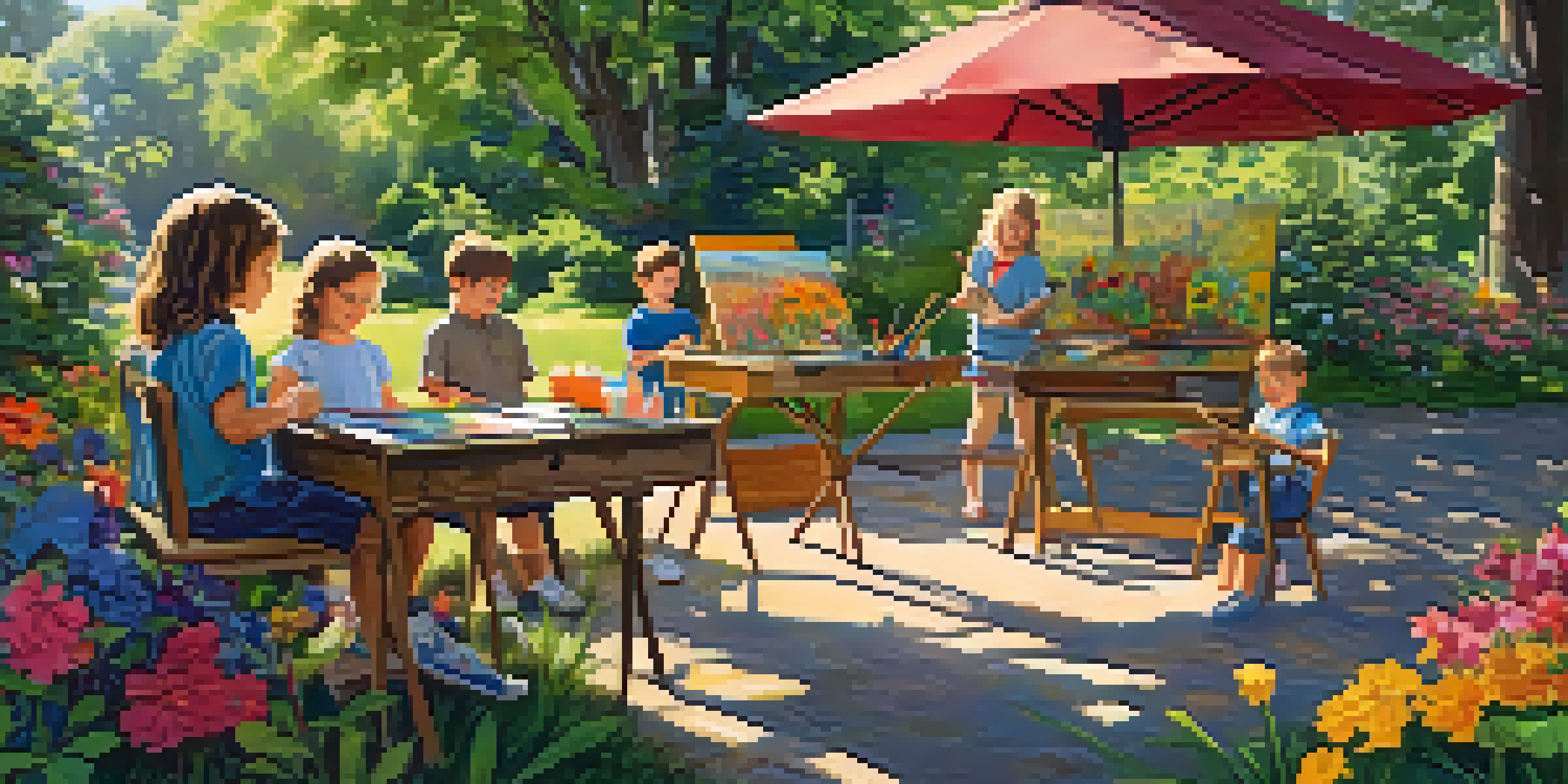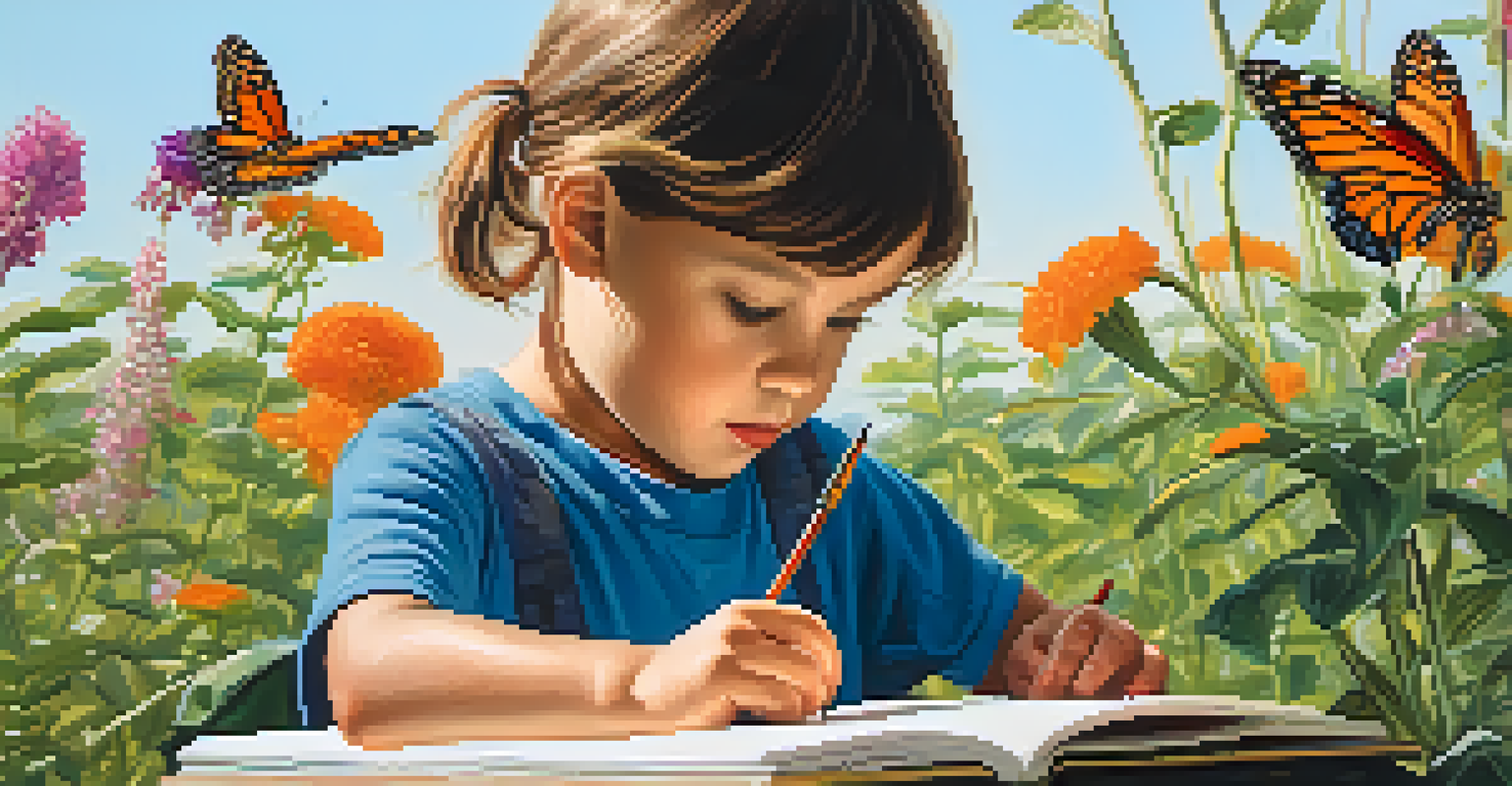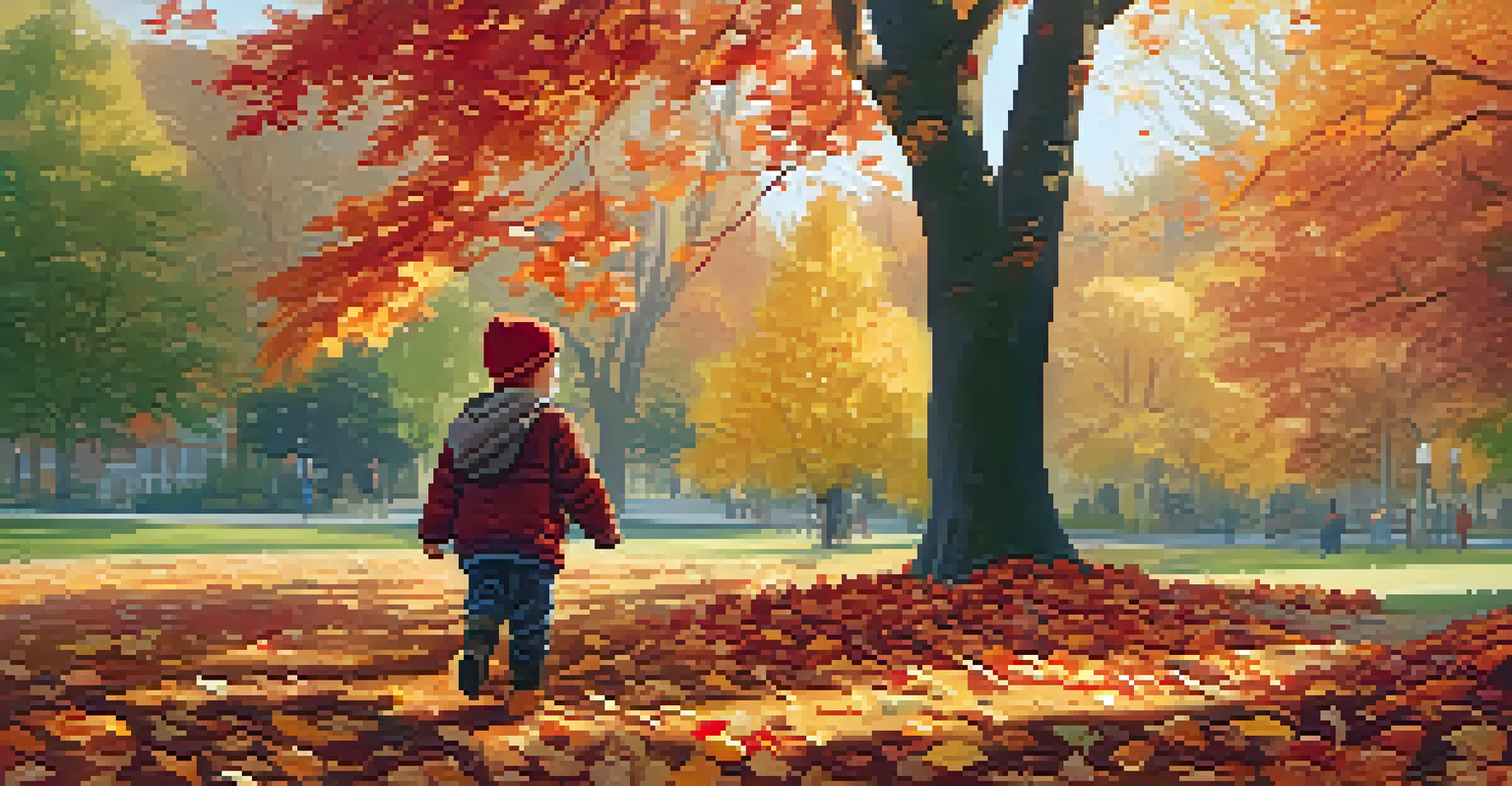How to Use Nature as Inspiration for Children's Painting

The Beauty of Nature: A Child's Canvas
Nature is a vibrant tapestry of colors, shapes, and textures, making it an ideal source of inspiration for children's painting. From the greens of leaves to the blues of the sky, every aspect of nature can ignite a child's imagination. Encouraging kids to observe their surroundings helps them appreciate the beauty in everyday life and sparks their creativity.
Every artist was first an amateur.
By engaging with nature, children learn to see the world through an artist's lens. They might notice the delicate patterns on a butterfly's wings or the intricate details of a flower. These observations not only enhance their artistic skills but also foster a deeper connection with the environment.
So, next time you take a walk with your child, point out interesting features of nature. Encourage them to describe what they see, which can lead to exciting painting ideas and help them develop their artistic voice.
Gathering Natural Materials for Art Projects
One of the most fun aspects of using nature as inspiration is collecting materials for art projects. Kids can gather leaves, twigs, flowers, and even pebbles to incorporate into their paintings. This hands-on approach not only makes the process enjoyable but also teaches them about the environment and its resources.

For example, children can use leaves as stamps to create beautiful prints on paper. They can also crush flowers to make natural dyes, adding unique colors to their artwork. This not only nurtures creativity but also instills a sense of resourcefulness.
Nature Sparks Children's Creativity
Engaging with nature helps children observe and appreciate their surroundings, fueling their artistic imagination.
By exploring different textures and forms from nature, children learn to think outside the box. They see that art can come from various sources, encouraging them to experiment with their artistic expression.
Nature Walks: A Source of Inspiration
Taking nature walks can be a transformative experience for young artists. During these walks, children can observe the beauty around them, taking mental notes of colors, shapes, and patterns that catch their eye. These observations can translate into their painting projects, leading to imaginative creations.
The earth has music for those who listen.
Encourage your child to bring a sketchbook along during these walks. They can jot down their thoughts or sketch scenes that inspire them. This practice not only enhances their observation skills but also serves as a reference for their future artwork.
The memories created during these walks can also inspire storytelling through art, allowing children to express their experiences and emotions creatively. Such activities foster a love for both nature and art.
Exploring Seasonal Changes in Nature
Nature is ever-changing, and each season offers unique inspiration for children’s painting. Spring brings vibrant flowers, summer showcases lush greenery, autumn paints the world in warm hues, and winter blankets everything in white. By focusing on these seasonal changes, kids can explore different palettes and themes in their art.
For instance, during autumn, children can use warm colors like reds, oranges, and yellows to depict falling leaves. In contrast, winter can inspire cool tones and scenes of snow-covered landscapes. This exploration helps kids understand how colors can evoke different feelings and moods.
Seasonal Changes Inspire Art
Each season offers unique colors and themes for children to explore in their artwork, deepening their connection to nature.
By creating art that reflects the seasons, children also learn about the cycles of nature. This awareness not only enhances their artistic skills but also deepens their appreciation for the environment and its rhythms.
Using Nature's Patterns and Textures in Art
Nature is filled with patterns and textures that can spark creativity in children's paintings. From the stripes of a tiger to the swirls of ocean waves, these natural designs can inspire kids to replicate or interpret them in their artwork. Recognizing and experimenting with these patterns helps children develop their artistic skills.
You can encourage your child to closely observe patterns found in nature, such as the arrangement of petals in a flower or the ripples in water. They can then translate these observations into their paintings, fostering a sense of creativity and innovation.
This practice not only allows for creative expression but also enhances their understanding of composition and design. By learning how to incorporate nature's patterns, children expand their artistic vocabulary.
Incorporating Stories from Nature into Art
Nature is full of stories waiting to be told, and encouraging children to incorporate these narratives into their art can enhance their creativity. For example, a child might paint a scene of animals living in harmony or depict a journey through a magical forest. Such storytelling through art allows children to express their thoughts and feelings.
Ask your child about their favorite places in nature and encourage them to paint a scene inspired by their experiences. This not only makes the painting process personal but also fosters a sense of connection to their environment.
Outdoor Art Stations Enhance Experience
Creating outdoor art stations allows kids to immerse themselves in their creativity surrounded by the beauty of nature.
By combining storytelling with painting, children learn to communicate their ideas and emotions visually. This blend of art and narrative can be a powerful tool for self-expression.
Creating Outdoor Art Stations for Kids
Setting up outdoor art stations can turn a simple painting session into an adventurous experience. Create a space in your garden or backyard where children can freely explore their creativity surrounded by nature. This relaxed environment encourages kids to immerse themselves in their artwork without distractions.
Provide various materials like paints, brushes, and natural objects, allowing kids to experiment as they create. The sounds of birds chirping and the feeling of grass beneath their feet can enhance their artistic experience, making them more attuned to their surroundings.

This setup promotes a playful and exploratory spirit, encouraging children to interact with nature while they create. Outdoor art sessions can be a delightful way to combine creativity with the beauty of the natural world.